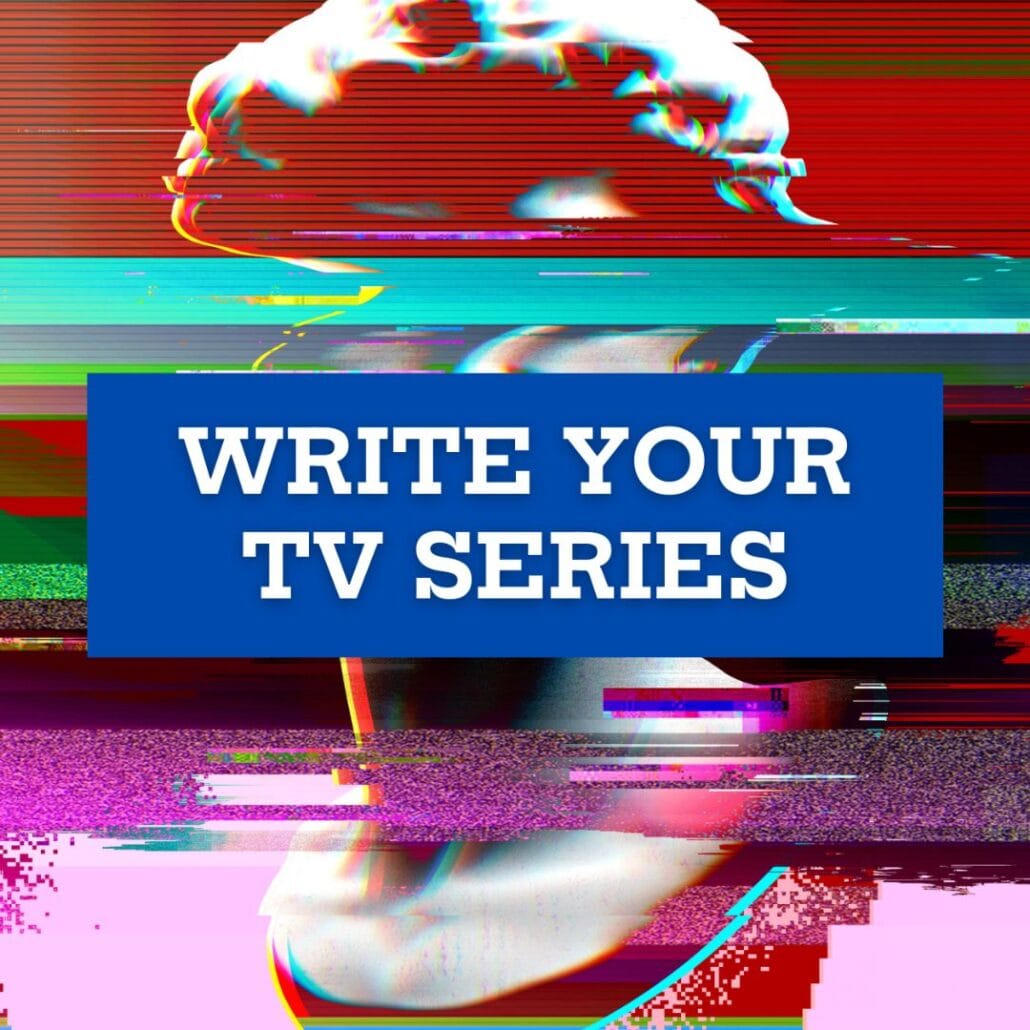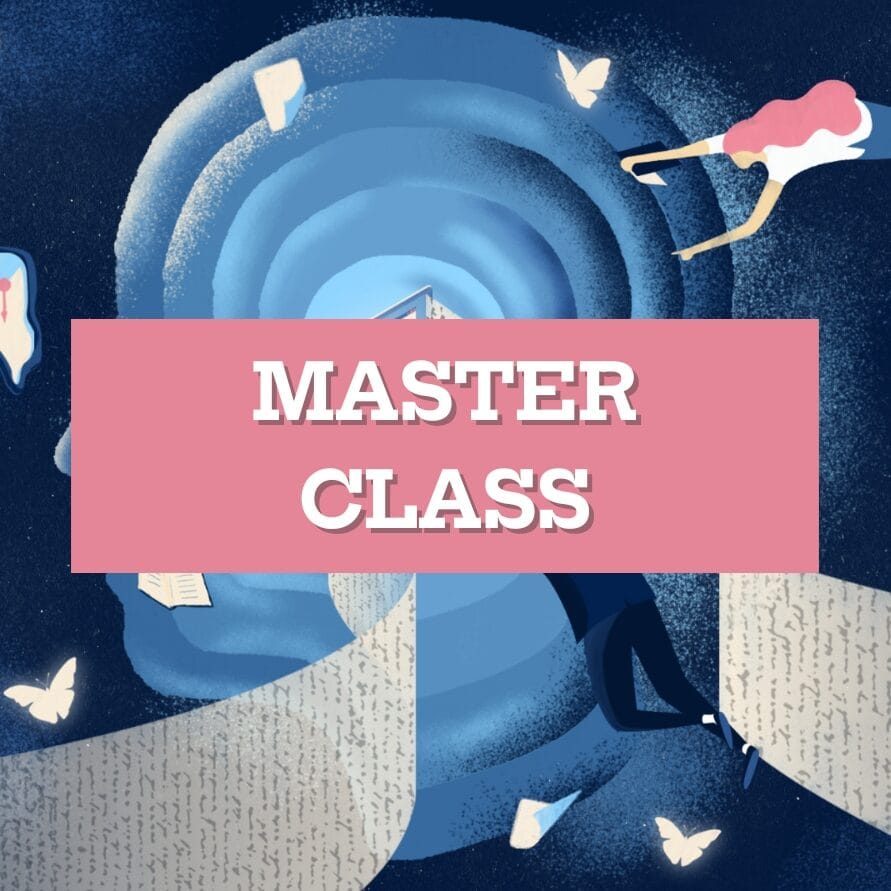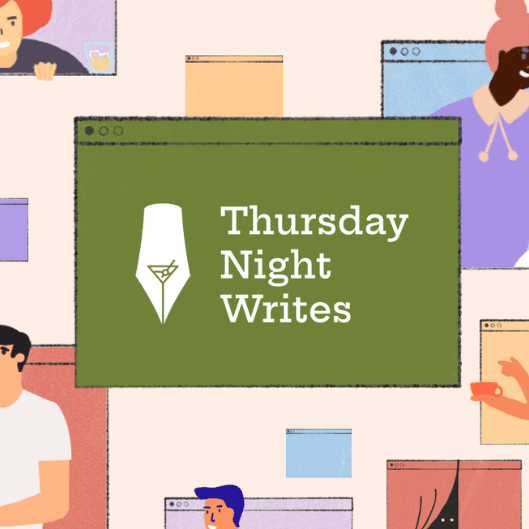Hello, I’m Jacob Krueger, and this is the Write Your Screenplay podcast. This week, we are going to be looking at Alex Garland’s new film, Civil War.
Civil War explores what happens when we become polarized, stop looking at each other as human beings and instead view one another as enemies.
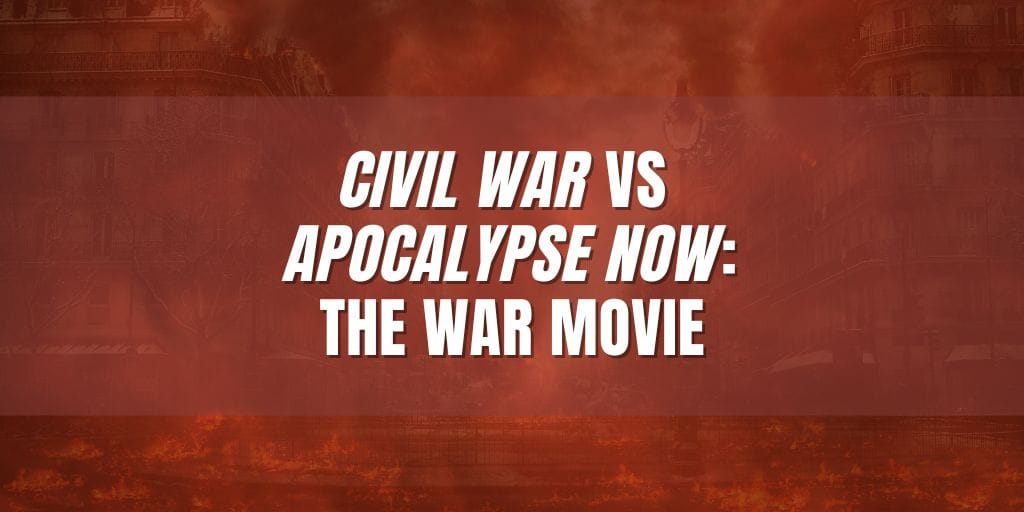
Structurally, Alex Garland’s Civil War is essentially built like Apocalypse Now, with a touch of The Last of Us.
But in the case of Civil War, the characters’ journey into the “heart of darkness” takes place in an America on the brink of collapse, rather than the Vietnam War. The zombie-like tones of Civil War won’t come as a surprise to those who know Alex Garland’s work. He wrote 28 Days Later.
We’re going to be talking a bit about the structure of Civil War and it’s similarities to the structure of Apocalypse Now and The Last of Us. We’ll also look at key differences in the socio-political implications of building a war movie by contrasting Civil War with Top Gun: Maverick. (Check out my Top Gun: Maverick Podcast).
One of the interesting choices that Alex Garland makes in the writing of Civil War is not to tell you what the hell is going on. We only have snippets of what’s happened.
We know that a president has stayed in office for three terms against the will of the American people, or at least against the Constitution.
We don’t know exactly how or why that happened. There’s virtually zero exposition but we know that has happened.
When we first meet the President, played by Nick Offerman, we suspect he’s making a “disinformation” speech about a victory tha doesn’t reflect what is really going on.
We know that in this world, in Washington, D.C., the press are shot on sight. We know that the press are seen as enemy combatants by the President.
That is all we know.
We don’t know the President’s politics. We don’t know if he is left or if he is right or if he’s somewhere in between. We don’t know if he is a fascist. We don’t know if he is a communist. We don’t know anything about his point of view except that he has violated the constitution and he is against journalism. He is against the truth coming out.
We know that America has fractured and that some kind of alliance called the Western Forces (WF) has been created in opposition to The President.
In our society this seems like an impossible alliance. It’s between California and Texas. And quite frankly, we don’t know what that alliance is about. We don’t know their politics. We don’t know what they believe in.
We don’t know if they’re liberal or conservative, Democrat or Republican, communist or fascist. But we know that they are fighting against the President, trying to retake the country.
Alex Garland has come under some fire for his depiction of the Western Forces– the fictional alliance of California and Texas– in Civil War.
Some critics have essentially said “This is crazy. This is just ridiculous whitewashing. California and Texas- they’re so far apart politically. This choice to imagine them as a combined force is just Alex Garland obscuring of the actual political message to avoid offending anyone.”
And if you’ve listened to my Top Gun: Maverick podcast, you know that that’s something that I criticized that film for.
In Top Gun: Maverick, like in Civil War, the nature of the political conflict, who the bad guys are, and what the bad guys are fighting for versus what the good guys are fighting for is completely obscured.
In Top Gun: Maverick, I think the criticism is actually correct. In that film, politics are obscured so that, left or right, Democrat or Republican, no matter what you believe, you can watch Top Gun: Maverick and go, “Yeah, America!” The enemy is faceless. Their agenda is faceless.
But also, the violence is faceless.
In Top Gun: Maverick, we experience violence without experiencing the pain underneath it. We experience the violence like a joy ride; like pure fun.
In Top Gun: Maverick, who is good? That is “us.” That is Tom Cruise.
And who is bad? That is faceless people in airplanes.
And who is dumb? That is anybody in a position of authority.
In that way, Top Gun: Maverick deeply simplifies the political situation we’re in in order to whitewash and make sure that nobody is offended by this film that needs to gross hundreds of millions of dollars to make its money back.
And I would argue that what Alex Garland is doing here in Civil War is so much more complicated.
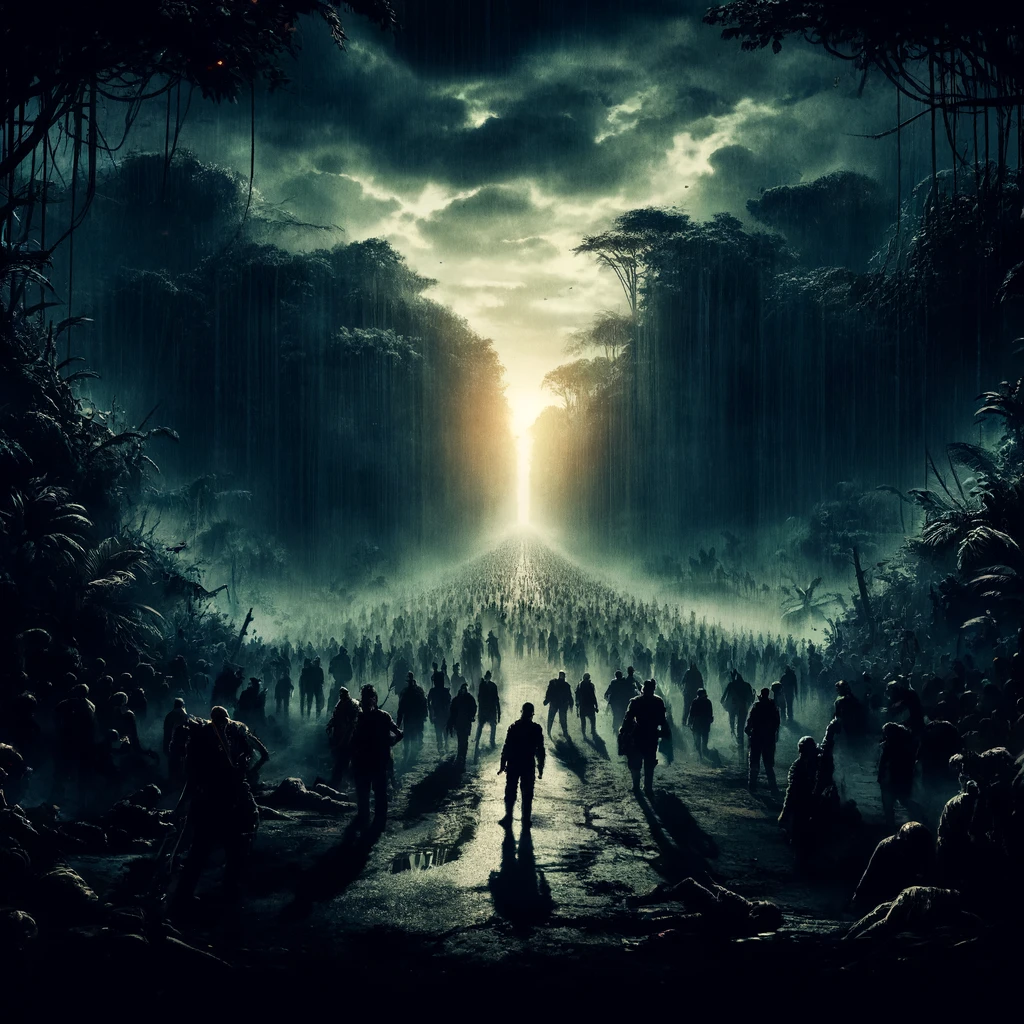
There’s a scene at the center of Civil War which illustrates Alex Garland’s theme, and what he’s really trying to say and do by making these unlikely choices about the nature of the political alliances in Civil War.
The journalists have driven into what looks like a kind of Christmas wonderland– there is even a giant Santa Claus figurine– and someone starts shooting at them. They take cover, and in taking cover, they discover two soldiers.
One soldier is lying on top of the other with a spyglass, and the other has a sharpshooter rifle. And those soldiers are trying to kill whoever’s in the house that’s trying to kill them.
It’s impossible to tell the political affiliations of these soldiers. We know that they are dressed in fatigue, but we don’t know if they’re WF or they’re Presidential forces. We know that one of the men has colorfully dyed hair. So maybe we have some implications with that. We might start to go, “Oh, maybe I think this is the kind of person that is,” but we know nothing about them.
And the heroes are reporters trying to figure out what the hell is going on. What’s the truth here? What is this?
And to paraphrase, what’s basically said to them by one of the soldiers is: “They’re trying to kill us. And we’re trying to kill them. And that is all you need to know.”
And Lee, the wisened reporter at the center of Civil War, who has seen it all, is trying to get more out of the soldier. And he’s basically saying, “Are you too dumb to get it? Do you not understand my words? They’re trying to kill us. We’re trying to kill them.”
This is a completely different move than what is happening in Top Gun: Maverick.
This is Alex Garland communicating: this is what I believe is actually happening in America right now.
Civil War was written in 2020 and slightly adjusted after the horrific events of January 6th. What Alex Garland is saying is that the actual politics quickly cease to matter in the wake of the massive polarization of America, when we start to believe “they’re the bad guy and we’re the good guys.”
The philosophical constructs and all of the complexity beneath instantly start to fall away and it becomes, simply: “we’re trying to destroy them, they’re trying to destroy us.”
And pretty soon we descend into the “heart of darkness.” We descend into the horror of war, as the desire and the search for truth and understanding fall away, until it simply becomes us against them.
And so the approach that Alex Garland takes in Civil War is also to decide, to really make his point in an America that is already nearly this polarized, this film cannot be about the politics. He doesn’t want to isolate half of America. He doesn’t want half of America to think,”Oh, this is liberal propaganda,” or the other half of America to think, “Hey, this is right wing propaganda.”
What I believe Alex Garland wants is for anyone to be able to see Civil War and think, “I see us in this. I see my country in this and I mourn my country. I feel the horror of what is happening to my country in this.”
What we’re watching in Civil War is the emotional conflict and polarization that’s currently happening in our country, just dialed up from a 5 to a 12.
What we’re watching is Alex Garland just turn up the dial on the anger and the hatred that’s already brewing.
And that’s part of what makes Civil War so overwhelmingly upsetting, that the problem of the film is growing out of the problem that we are all seeing right now in our politics.
Now let’s take that one step further, let’s look at the construction of Civil War.
So why are TexasFlorida and California connected here? Because it’s not about today’s politics. Alex Garland is actually making a conscious statement. “Don’t allow this movie to further polarize you.”
Rather, what he’s trying to do is exactly what Lee, the grizzled photographer, is trying to do. Her belief is that a journalist’s job is to take a picture, not to try to influence events, to take a picture and send that truth back home.
To paraphrase a line, she basically says, “I used to believe that every picture she took was just a warning sent back home. Don’t do this.”
But despite all of her pictures, there’s this. This is happening.”
I’d like to suggest to you that what Alex Garland is doing in Civil War is simply “taking a picture” to send back home, just like Lee is.
He’s taking a picture of a potential future. He’s taking a picture of January 6th just turned up a little bit or the outcome of January 6th if things had gone just a little bit differently.
He’s taking a picture and he’s saying, “Don’t do this.”
And it takes tremendous restraint to build a film like this. Because we, as artists, all want to get up on our soapbox and say, “Listen to me. I have the answer, this is what I believe.”
But when you do that, you can often end up leaving behind anyone who already doesn’t agree with you, and then you lose the power of your film to actually change minds.
The difference between what Alex Garland is doing and what Top Gun: Maverick is doing is that Civil War humanizes everybody.
Everybody’s a human being. Some are horrific human beings. Some are terrifying human beings. Some are suffering human beings. Everybody is a human being dealing with the horror of this war.
And because everyone is humanized, it’s the opposite of Top Gun: Maverick. We’re not whitewashing. We’re not putting the bad guy in a mask so you can’t even tell who they are.
We can tell who all of these people are. It’s only their politics that are obscured from us because Civil War is not about politics.
And I’d argue that what’s happening in our country is not actually about politics either. That what’s happening in our country is about polarization, is about seeing those who disagree as the enemy, is about, as Jesse Plemons character puts it, “What kind of an American are you?” as opposed to “We’re all Americans,” or to take it further, “We’re all people of the world.”
This is a film about what happens when you start to oversimplify, when you start to destroy, undermine, or not care about truth, when you start to search only for the ideas that validate your own opinions.
So I’d like to suggest that it takes tremendous restraint for Alex Garland not to repeat those errors in the making of his film. To actually say, “No, that’s not what it’s about. It’s not about ‘listen to me.’ It’s about ‘don’t do this.'” It’s about putting a little snapshot of what he sees as truth in front of you and allowing you to make your own decision.
The other thing, of course, that should be obvious in Civil War, is that unlike in Top Gun: Maverick, we see the blood. We see the horror. And we are horrifically disturbed by everything that is happening, regardless of what side the perpetrators or the victims are on.
Civil War is not a celebration of “we’re good, you’re bad.” It’s a journey into the heart of darkness that grows out of polarization, when people start to see each other as the enemy.
I mentioned earlier that some of the structure of Civil War mirrors the form of zombie movies. In a way, Apocalypse Now is a zombie movie, just like Civil War is a zombie movie.
Zombie movies are set in a world of the collapse of society. As our characters journey, they encounter different societies where different people deal with the horror of apocalypse in different ways. They are pursued by different kinds of monsters who are driven by motivations that are not about politics, that are driven by madness.
And because this is a journey into madness, into the heart of darkness, following a traditional structure wouldn’t make any sense. We need to watch these characters land in these different locations and try to make sense of that.
Now that doesn’t mean there is not a structure. It’s just built differently.
So let’s talk about how the structure of Civil War is built.
The “good guys” at the center of Civil War are a team of unbiased journalists.
There’s a reason for this. Garland believes that unbiased journalism– journalism that takes the photograph and allows you to make your decision rather than trying to push an agenda– is the antidote to polarization in America.
And yet, although this story is centered around unbiased journalists, throughout the experience of watching Civil War, you can’t help but shut down your analytic mind, your unbiased journalistic mind, and get sucked in, as if this experience was really happening before your eyes.
This is a concept commonly described as “suspension of disbelief.”
Contrary to populular belief, the “suspension of disbelief” we experience watching a film like Civil War is not a conscious decision that an audience makes.
We don’t decide, “you know, I think I will open up my emotions to the full impact of this film. I think I will decide to process this piece which I know is fiction as if it was true. I think I’ll suspend my disbelief now.” This is not how it works.
Suspension of disbelief is a hypnotic state that the audience enters. And there are specific techniques that we can use as writers and as filmmakers to induce that hypnotic state.
We can learn to create– not a suspension of disbelief by choice– but a suspension of disbelief beyond choice; to create the feeling that what the audience is seeing is real.
We’ll come back to how Alex Garland engages this process in Civil War, but first let’s look at the characters and the structure of this film.
There are going to be some major spoilers ahead. There’s no way for me to do this movie justice without giving you some spoilers, including the ending. But I will warn you before each major spoiler…
Like Apocalypse Now, Civil War does not have the traditional narrative structure that we are used to seeing in Hollywood movies.
Rather, it’s built like a road trip movie– if the road trip was a journey along the worst road trip of your life. It’s a journey through the landscape of war, and at each stop along this road we see people dealing with, making sense of, reacting to a society that is falling apart.
For those of you who don’t know Apocalypse Now, it’s Francis Ford Coppola’s look at the Vietnam War, through an adaptation of Joseph Conrad’s book, Heart of Darkness. It stars Martin Sheen as Captain Willard, an assassin on a hunt for a rogue Colonel Kurtz, played by Marlon Brando. As we track Willard’s descent into madness along his search for Kurtz, Coppola is trying to make sense of the heart of darkness that lives inside all of us.
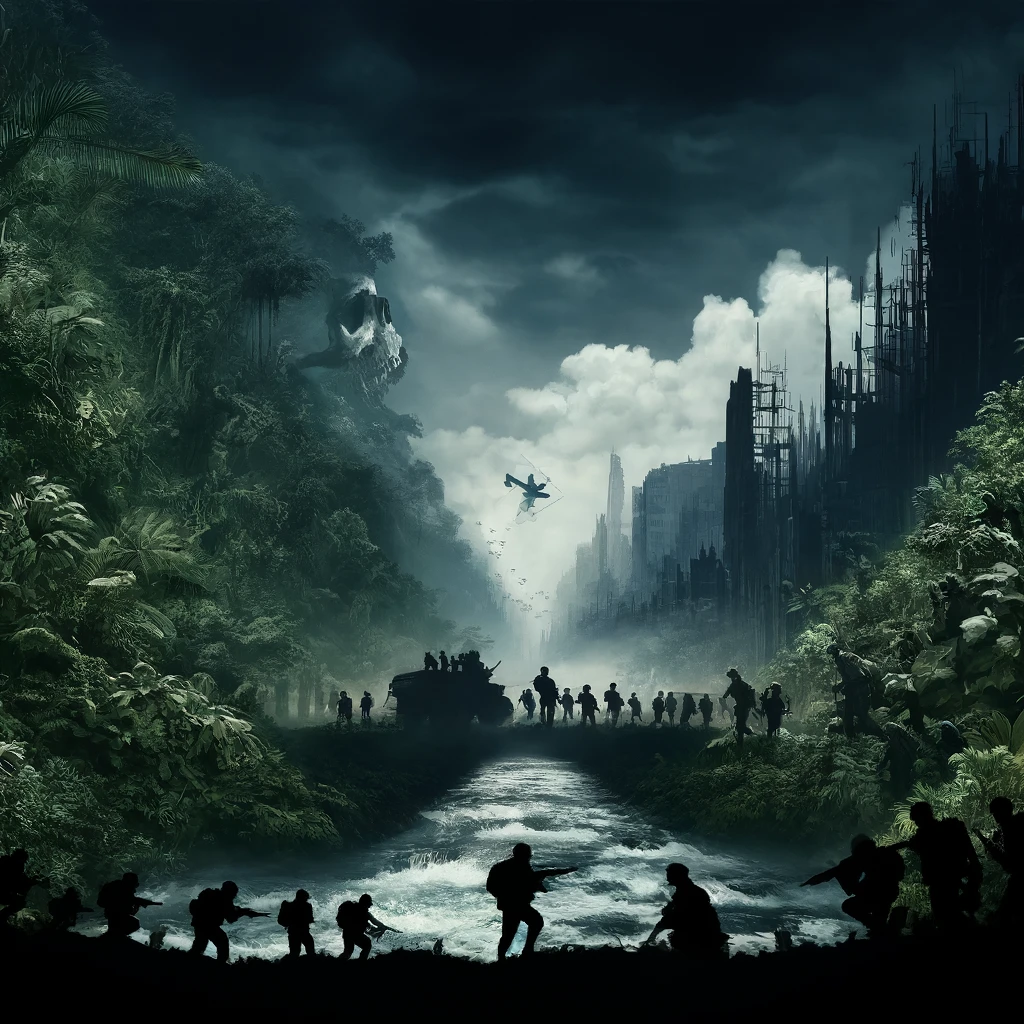
At the center of Civil War we have the “good guys,” a team of journalists on a similar journey to Willard’s in Apocalypse Now: to travel through the heart of darkness of war to reach a rogue, third term President.
But in the case of Civil War the goal of the journalists is not to assassinate the President, but to get a quote before he is deposed and killed.
There are three main journalists who we are following.
Lee, played by Kirsten Dunst, is the grizzled, seen everything, haunted-by-PTSD, tough-as-nails, war photographer.
Joel, played by Wagner Moura, just loves the adventure. He lives for the thrill of the story and he is drunk all the time.
And Sammy, played by Stephen McKinley Henderson, is the old guard, hanging on to what journalism used to be. He is no longer agile enough to keep up with a new world, but he is a mentor to all of the other journalists that we will meet.
And then into this group that cares and knows each other enters a young journalist with a big dream:
Jessie, played by Cailee Spaeny.
Jessie wants to become the war photojournalist that America needs. She is the hope of a new generation, with, possibly, the antidote to this terrible polarization. She is equipped with her old camera. We’re told it was her father’s camera. It’s a symbol, of course, of old journalism– the way it used to be before the age of the internet.
In a way, Jessie’s journey is also like a super-dark Almost Famous: A kid who is way too young for the horrors she is about to encounter, going on a journey with older, not particularly safe people who have been affected by a complicated war.
The primary relationship in Civil War is between Lee and Jessie. It’s a lot like the primary relationship in The Last of Us between Joel and Ellie.
In The Last of Us, (check out my The Last of Us Podcast) Joel is the tough middle-aged guy, haunted by PTSD, unable to let anybody get close. And Ellie is the young precocious girl that he is stuck with. Their connection develops as a father-daughter relationship, and through it, Joel will come to care about more Ellie than himself.
This is the same journey that Lee and Jessie are going to go on together in Civil War.
Where does this relationship begin? It begins with Lee saving Jessie’s life while Jessie is trying to document what turns out to be a suicide bombing. And it begins with Lee not wanting Jessie to tag along.
Lee has a strong objective. And this is where we do have that traditional structure in this untraditional screenplay.
Lee’s want is just like Willard’s want in Apocalypse Now. Willard needs to track down the Marlon Brando character. Lee needs to track down The President. Both of these characters are driven by the same need: to make sense of the senseless.
And Lee is willing to go, together with Sammy and Joel, into the heart of darkness to get what she wants. She’s going to Washington D.C., where journalists are killed on sight. She wants an interview with The President.
And Jessie wants to come along.
Early on, Lee warns Jessie, that she’s going to end up shot and killed. Jessie asks Lee, if she’ll take her picture when she’s killed.
And Lee responds, “What do you think?”
We start the relationship with Lee basically saying, “If they shoot you, I’m just gonna take your picture. I will just document you like any other war victim. I don’t want to build a connection to you.”
And through this complicated journey through a society in collapse, Lee and Jessie will come to care about each other…
Until at the end of the film…
Spoiler alert…
…we get a total flip of that relationship.
The structure of the screenplay for Civil War builds Lee from this place of journalistic detachment toward Jessie (and toward the world) to the place where Lee will give her life to save Jessie’s.
They are in the White House. They have found their way into the heart of darkness, just like Willard in Apocalypse Now. And Jessie is taking a picture in the line of gunfire. Lee throws her body across Jessie’s and takes the bullet for her.
So it is not Jessie who ends up shot and dead, but the other way around.
Even more powerfully, it is Jessie who photographs Lee’s death. And it is Jessie who walks past the dead body of Lee to document that last photo with the President.
It is Lee who takes the journey from journalistic detachment to emotional connection. And it is Jessie who takes the journey from emotional connection to journalistic detachment.
What we structually in Civil War is not a story of four “perfect” journalists fighting against baddies. Civil War is not Top Gun: Maverick. The screenplay is much more complicated.
Civil War is a descent into madness for all.
We are watching Jessie go from the wide-eyed young girl to the dehumanized journalist whose only drive is to document.
To build this journey, early on in the film, in one of their first pit stops at a gas station, Alex Garland sends Jessie to discover two men hung by their hands, covered in blood, still alive, being tortured by the men at the gas station.
Supposedly they’re looters. We don’t even know.
And, a particularly scary gas station attendants, who is of course armed with a gun, asks Jessie, essentially, what she wants him to do with them? Should he shoot them now? Should he torture them more? He’s playing a little dark game with her. And Jessie is so overwhelmed that she cannot even speak.
She gets back to the SUV with the other journalists. And she is beating herself up. What if I could have done something? What if I could have changed something? Maybe I could have saved their lives. She couldn’t even respond.
And she’s told by Lee and by the other journalists, (paraphrased) “You can’t do that. You can’t ask those questions. You can only take the picture. Your job is just to take the picture.”
And I would suggest that this is the internal war inside of Alex Garland.
Of course, in writing Civil War, Alex Garland, just like all of us, has a political statement he wants to make. “How can I change this,” we ask ourselves as writers, just like Jessie asks herself in Civil War.
But Alex Garland is not going to allow himself to try to change your mind.
Like Lee, he hopes that you will take his “photograph” as a warning that reaches beyond your political beliefs, whatever they may be: don’t do this.
In support of this goal, one of the interesting choices that Alex Garland makes in the writing of Civil War is to not tell you what is actually going on politically. We only have snippets.
Instead of telling you, he’s going to show you, like a journalist, with snapshots, the consequences if you ignore the warning: don’t do this.
Just like most great movies, the structure of Civil War is captured in the profound changes of its complicated central characters.
As we’ve discussed, Jessie, the wide eyed, emotionally connected young journalist, essentially becomes her hero, Lee, the disconnected, PTSD embodiment of the costs of journalistic detachment.
Lee goes on the opposite journey: from being so tough that nothing can touch her (though we get snapshots of how she is haunted by PTSD from her past experiences) to going through a total mental breakdown. (A breakdown similar to Willard’s in Apocalypse Now).
And on the other side of that, Lee finds a path to recovering her ability to emotionally conect: to care about another human being more than the job, the mission, the purpose.
Similarly, we watch Joel, the Wagner Moura character, go on his journey through change.
More spoilers here…
After Sammy’s death, Joel gets word that the Capital has fallen. And Joel realizes: they’re not going to get the interview, The President’s going to be dead, and Sammy gave his life for nothing. He has lost his mentor.
Joel goes on a journey from the love of adventure, from riding the adrenaline high, to confronting the meaninglessness of his work.
Finally, let’s talk about Sammy.
Remember, Sammy represents the old guard. He represents what journalism used to be. But he is too old. He is not nimble enough. He is not built for this new world, despite his incredible instincts and his desire to hold on and his love for what he does.
There’s a wonderful scene where the journalists realize there is another SUV coming up on them really, really fast. And they don’t know what to do. They’re not fast enough to outrun it. So all they can do is allow it to pull up to the side.
And when that SUV pulls up beside them, we get a tonally unexpected moment in Civil War, reminiscent of Robert Duvall’s, “I love the smell of napalm in the morning” scene in Apocalypse Now.
If you remember Apocalypse Now, this disturbing, but oddly joyous scene, with Robert Duvall’s soldiers surfing on the beach, gives us the same unexpected experience of joy and humanity inside of the horror of war.
In Civil War, have seen ugliness upon ugliness, mirroring and progressively outdoing the violence of the early gas station scene. But now we have this moment where, like in Apocalypse Now, suddenly in a disturbing way, we are compelled by joy.
These asian Journalists driving the other SUV are having the time of their life scaring the crap out of the other journalists. It turns out they are friends of the party. And we have this wild scene where one of them switches SUVS at high speed– he jumps out the window from one SUV into the other.
And Jessie loves it so much she wants to do it too.
So she jumps out of the window into the other SUV and that SUV speeds off ahead and Lee loses track of her.
And Lee is scared for Jessie.
Moments later, they discover the SUV. It’s at the side of the road. The doors are open and no one is inside.
And they find Jessie and one of the Asian journalist friends from the joy ride we just witnessed. They are on their knees at gunpoint.
Jesse Plemons’ character, in sun-glasses and army fatigues, is dumping bodies into a mass grave, covering them with lye. And it seems pretty clear that he intends for the captured journalists to be the next victims.
Lee and Joel and the other Asian journalist decide that they are going to try to save her. They’re going to approach and they are going to try to impress upon this man: We are press. Maybe he doesn’t know we are Press. He is supposed to respect the safety of the Press. After all, he is in military fatigues.
Sammy, who’s been here before, knows better. Sammy knows that this is certain death. The team leaves Sammy and goes without him, Sammy’s safety, because he is too old.
And Joel talks to the Jesse Plemons’ character, and Joel says, “We’re journalists,. We’re American.”
Jesse Plemons responds: “What kind of American?”
He executes one of the Asian journalists.
And then he forces each of our journalists to tell him where they are from.
And remember, we are in this crazy polarized America where we don’t even know what is right and wrong or who is on what side.
Joel admits he is from Florida.
It’s impossible to tell if the Plemons thinks that Florida is American or not.
Jessie, with Lee’s urging to tell him, admits that she is from Missouri. And Jessie Plemons agrees, Missouri is America.
Lee tells him where she is from: “Colorado.”
And then finally the last Asian journalist needs to speak. And at the moment that he finally, through his terror, gets the words out, “Hong Kong…” he is executed.
“That’s China,” Plemons says.
This is as close to a political message about what side the bad guys are on. Now we know the bad guys are on the side of racism, but we don’t even know which side the Plemons character is on. Is it The President’s side, or the side of the Western Forces (WF)? Maybe he has just totally gone rogue and is doing his own thing.
All we know is that he has his view of who we are and who the other is and in his view the other deserves to die.
And just when it looks like the rest of these journalists may get executed as well, Sammy runs down Plemons and one of the other bad guys with the press SUV.
This is a central metaphor in Alex Garland’s Civil War: old school press saves the day.
And this allows them to escape, but Sammy is shot, and bleeds out over the course of their escape. And it’s with the loss of Sammy that our group arrives at a WF camp. And this is the first time we’ve known what side anybody is on.
In previous scenes we have seen torture. We have seen a shootout where a black man in army fatigues- we don’t know what side he’s on- is stuck behind a column and cannot get back behind the wall to safety to his friends without being shot by snipers up ahead.
We have seen the Christmas decoration area shootout.
We have seen a town that’s pretending like nothing’s happening. All the shops are still selling stuff. Our crew of journalists goes shopping in the middle of this horror (using something totally naturalistic to create a surrealistic feeling in a world gone mad).
And we’ve seen a camp where young are giving food and aid to those who have been displaced.
We have seen all these different ways of dealing with the madness, not knowing whose side anybody’s on… until finally we get to this WF encampment.
And now we know whose side we’re on, except it seems like it is all for nothing.
This brings us to the final action sequence of Civil War. And that final action sequence is not played for adrenaline pumping, adventure, and excitement. It is not Top Gun: Maverick. That final scene is played for horror.
Because even though we are on the side of the good guys, what we are watching, as the WF fights through the capital to kill The President, is just absolutely terrifying, senseless war violence
And with the WF, of course, are Lee and Joel and Jessie.
For us, the audience, Alex Garland’s choice to shoot this final horrific sequence at the Capital is one of the things that makes the piece feel so real, makes it hit too close to home, makes it so upsetting– it makes us want to weep for our country. As we watch, we are haunted by images that could have been shot on January 6th.
Civil War just turns up the volume on our reality. It says, if things had just played out a little bit differently, it might have looked like this: brutal violence, murder and horror. And just like Apocalypse Now, the film builds towards a last word.
The last word is supposed to make sense of everything.
In Apocalypse Now, the last words are “the horror.”
In Civil War, The President is on the ground. The WF has their guns on him. And the journalist, Joel, says, “Stop. I need a quote.”
The President says, “Don’t let them kill me.”
Joel says, “That will do.”
And then we watch The President executed.
I just want you to think about that for a moment because those words are doing exactly what “the horror” does in Apocalypse Now.
The last words of Civil War serve to deprive us of a political complexity, of an emotional complexity, of an understanding, of making sense about why all this happened.
Those are words that at once expose the fear and the cowardice and the struggle for survival against the other that is driving all of this, and also the impossibility of actually making sense of any of it.
They’re a reiteration of the senselessness of that experience that we had with the Plemons character in military fatigues:
They’re trying to kill us.
We’re trying to kill them.
What kind of American are you?
Nothing else matters.
The President’s last words deprive us of a political complexity, of an emotional complexity, of an understanding, of a making sense of why all this happened. Those last words boil it down to what we’ve been seeing the whole time.
They’re trying to kill us and we’re trying to kill them.
What kind of American are you?
Civil War isn’t driven through a traditional narrative structure. It doesn’t have a traditional plot that is being driven by the characters.
Rather, we have characters driven by a profound, difficult want on a “road trip movie” through hell– like a super-dark version of Almost Famous or a “non-zombie” version of The Last of Us.
At each stop, the journalists experience a different way that people are dealing with things that do not make sense, the ways they are dealing with the horror, the “heart of darkness” of war.
At each stop, the things that are happening are often not brought about by their actions. It’s not the cause effect structure we’re used to seeing in movies. It’s sane characters making their way through a world of madness.
But through the madness of Civil War, we do have a thread of structure that sustains us: we have characters driven by a profound, difficult want: to make sense of what is happening. And they shift in relation to one another.
At each stop along the road trip they experience a different way that people are dealing with the “heart of darkness” of war. And they are moved.
In the town where everyone’s living as if no war is happening, Lee is pushed by Jessie to come out of her hardened shell, to try on a pretty dress.
At the White House we get the shift from early on in the film where Jessie asking Lee, “Are you gonna take a picture of me when I’m shot?” to Lee taking a bullet for Jessie and Jessie simply documenting.
The directorial choices that Alex Garland is making are brilliant. If you’ve taken my Write Your Screenplay class, you may recognize that his directorial choices use Isolated Visual Moments of Action. These hypnotize us, as readers, and make it feel real.
But there’s something going on beyond directorial choices here.
When we can feel the author’s voice, we remember it’s not real. It reminds us that there’s somebody trying to convince us; that there’s a political agenda.
What makes Civil War feel real, what makes you suspend your disbelief whether you want to or not, is the writer’s restraint of his own desire to get on a soapbox.
When you step back and say, “I believe in my truth so much that I know if I just show you, you will get it,” and make something that somebody who disagrees with you can also see and understand and connect with, when you decide I’m not going to fight polarization with polarization, I’m going to fight polarization with humanity, this is what allows us to believe.
There’s a brilliant way that Alex Garland captures this in Civil War:
Visually, we keep on getting images of photographs that Jessie is taking, interspersed with the action of Civil War. And those little snapshots build a reality as if we’re in photojournalism, as if this is really happening.
So, what I’d like to suggest to you as we finish this journey is that the key to getting your audience to suspend their disbelief, and to hypnotizing your audience, to allowing them to believe and to be moved by and changed by what they see does not come from arguing a point, getting on your soapbox or telling people they’re wrong.
It comes, instead, from allowing yourself to see the humanity in all different kinds of people. It comes from empathy.
As you write, rather than trying to convince, persuade or manipulate your audience, start by recognizing that your characters are like people. They’re complicated. They’re flawed.
They’re problematic, challenging, and possibly even horrible and nightmarish.
Rather than ask, “What kind of American are you?” step into your characters.
See their humanity. Capture the visual images you see with as much specificity as you can.
And send that snapshot home.
I hope that you enjoyed this podcast. If you are getting a lot out of it and it’s helping your writing, come and study with us. We have a free online class every Thursday night, foundation classes in screenwriting and TV writing, a Master Class for those of you who want a grad school education at the tiniest fraction of the cost, and a a wonderful ProTrack mentorship program that will pair you one on one with a professional writer, who will read every page you write and mentor you through your entire career at less than you would pay for a single semester of grad school.


